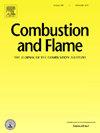An improved consistent soot model is proposed and applied to evaluate the effect of 2-butanone addition (10 % to 50 % on a volume basis represented as case 1 to case 5) to ethylene fuel on soot formation using a counterflow burner configuration. The predictive capability of the suggested soot model is verified by assessing its performance against existing experimental data on soot formation (SF) configuration-type ethylene counterflow flames at diverse strain rates and various fuel additives. The proposed soot model comprises 55 inception reactions with temperature-dependent collision efficiency and 10 condensation reactions from 10 PAH species (from naphthalene to larger PAHs up to coronene), including modified HACA surface growth and oxidation reactions. 2-butanone is produced as a byproduct during the pyrolysis of biomass and the microbiological fermentation of agricultural waste. It holds various benefits as a prospective biofuel for spark ignition (SI) engines. Limited information exists regarding its sooting characteristics due to a lack of available soot measurements. The simulations are conducted for the soot formation (SF) type counterflow flames with a fixed fuel and oxidizer jet velocity. The proposed soot model can effectively replicate both the qualitative and quantitative aspects of the experimental trends and shows a better agreement than the existing models available in the literature. The soot volume fraction (SVF) and the particle number density (PND) decrease with increasing the 2-butanone concentration in the binary fuel mixture. The PAH concentration decreases with increasing 2-butanone addition in the fuel mixture. The peak SVF and the maximum temperature are reduced by ∼22.7 % and ∼3.6 %, with a 40 % increase in the 2-butanone portion in the fuel mixture from case 1 to case 5. Increasing the 2-butanone content in the fuel mixture decreases the inception rate, HACA rate, and condensation rate while it increases the oxidation rate.


